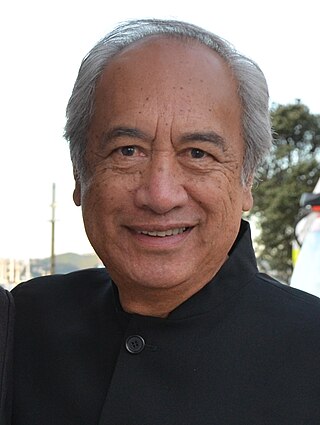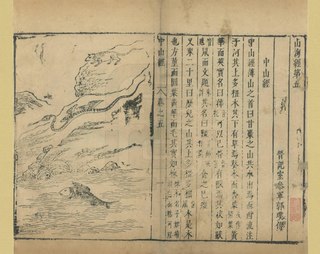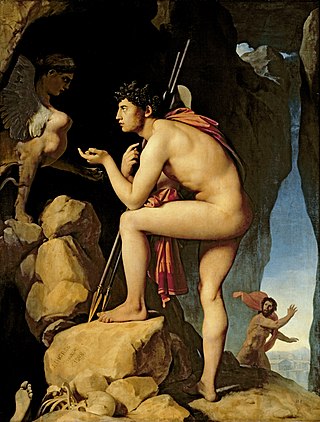
Developmental psychology is the scientific study of how and why humans grow, change, and adapt across the course of their lives. Originally concerned with infants and children, the field has expanded to include adolescence, adult development, aging, and the entire lifespan. Developmental psychologists aim to explain how thinking, feeling, and behaviors change throughout life. This field examines change across three major dimensions, which are physical development, cognitive development, and social emotional development. Within these three dimensions are a broad range of topics including motor skills, executive functions, moral understanding, language acquisition, social change, personality, emotional development, self-concept, and identity formation.

Noah appears as the last of the Antediluvian patriarchs in the traditions of Abrahamic religions. His story appears in the Hebrew Bible, the Quran and Baha'i writings. Noah is referenced in various other books of the Bible, including the New Testament, and in associated deuterocanonical books.

Children's literature or juvenile literature includes stories, books, magazines, and poems that are created for children. Modern children's literature is classified in two different ways: genre or the intended age of the reader, from picture books for the very young to young adult fiction.

Noah's Ark is the ship in the Genesis flood narrative through which God spares Noah, his family, and examples of all the world's animals from a global deluge. The story in Genesis is based on earlier flood myths originating in Mesopotamia, and is repeated, with variations, in the Quran, where the Ark appears as Safinat Nūḥ and al-fulk.

A child is a human being between the stages of birth and puberty, or between the developmental period of infancy and puberty. It may also refer to an unborn human being. The legal definition of child generally refers to a minor, otherwise known as a person younger than the age of majority. Children generally have fewer rights and responsibilities than adults. They are generally classed as unable to make serious decisions.

John Robert Fowles was an English novelist of international renown, critically positioned between modernism and postmodernism. His work was influenced by Jean-Paul Sartre and Albert Camus, among others.

The Montessori method of education is a type of educational method that involves children's natural interests and activities rather than formal teaching methods. A Montessori classroom places an emphasis on hands-on learning and developing real-world skills. It emphasizes independence and it views children as naturally eager for knowledge and capable of initiating learning in a sufficiently supportive and well-prepared learning environment. It discourages some conventional measures of achievement, such as grades and tests.

Gojoseon, also called Joseon, was the first kingdom on the Korean Peninsula. According to Korean mythology, the kingdom was established by the legendary king Dangun. Gojoseon possessed the most advanced culture in the Korean Peninsula at the time and was an important marker in the progression towards the more centralized states of later periods. The addition of Go, meaning "ancient", is used in historiography to distinguish the kingdom from the Joseon dynasty, founded in 1392 CE.
The historicity of Jesus is the question of whether or not Jesus of Nazareth historically existed. The question of historicity was generally settled in scholarship in the early 20th century, and the idea that Jesus was a mythical figure has been and still is considered a fringe theory in academic scholarship for more than two centuries, but has gained popular attention in recent decades due to the growth of the internet.

Early childhood education (ECE), also known as nursery education, is a branch of education theory that relates to the teaching of children from birth up to the age of eight. Traditionally, this is up to the equivalent of third grade. ECE is described as an important period in child development.

Witi Tame Ihimaera-Smiler is a New Zealand author. Raised in the small town of Waituhi, he decided to become a writer as a teenager after being convinced that Māori people were ignored or mischaracterised in literature. He was the first Māori writer to publish a collection of short stories, with Pounamu, Pounamu (1972), and the first to publish a novel, with Tangi (1973). After his early works he took a ten-year break from writing, during which he focused on editing an anthology of Māori writing in English.

A flood myth or a deluge myth is a myth in which a great flood, usually sent by a deity or deities, destroys civilization, often in an act of divine retribution. Parallels are often drawn between the flood waters of these myths and the primaeval waters which appear in certain creation myths, as the flood waters are described as a measure for the cleansing of humanity, in preparation for rebirth. Most flood myths also contain a culture hero, who "represents the human craving for life".

The Classic of Mountains and Seas, also known as Shanhai jing, formerly romanized as the Shan-hai Ching, is a Chinese classic text and a compilation of mythic geography and beasts. Early versions of the text may have existed since the 4th century BCE, but the present form was not reached until the early Han dynasty. It is largely a fabulous geographical and cultural account of pre-Qin China as well as a collection of Chinese mythology. The book is divided into eighteen sections; it describes over 550 mountains and 300 channels.

The Christ myth theory, also known as the Jesus myth theory, Jesus mythicism, or the Jesus ahistoricity theory, is the view that the story of Jesus is a work of mythology with no historical substantiality. Alternatively, in terms given by Bart Ehrman paraphrasing Earl Doherty, it is the view that "the historical Jesus did not exist. Or if he did, he had virtually nothing to do with the founding of Christianity."
The critical period hypothesis or sensitive period hypothesis claims that there is an ideal time window of brain development to acquire language in a linguistically rich environment, after which further language acquisition becomes much more difficult and effortful. It is the subject of a long-standing debate in linguistics and language acquisition over the extent to which the ability to acquire language is biologically linked to age. The critical period hypothesis was first proposed by Montreal neurologist Wilder Penfield and co-author Lamar Roberts in their 1959 book Speech and Brain Mechanisms, and was popularized by Eric Lenneberg in 1967 with Biological Foundations of Language.
Environment and intelligence research investigates the impact of environment on intelligence. This is one of the most important factors in understanding human group differences in IQ test scores and other measures of cognitive ability. It is estimated that genes contribute about 20–40% of the variance in intelligence in childhood and about 80% in adulthood. Thus the environment and its interaction with genes account for a high proportion of the variation in intelligence seen in groups of young children, and for a small proportion of the variation observed in groups of mature adults. Historically, there has been great interest in the field of intelligence research to determine environmental influences on the development of cognitive functioning, in particular, fluid intelligence, as defined by its stabilization at 16 years of age. Despite the fact that intelligence stabilizes in early adulthood it is thought that genetic factors come to play more of a role in our intelligence during middle and old age and that the importance of the environment dissipates.

In classical psychoanalytic theory, the Oedipus complex refers to a son's sexual attitude towards his mother and concomitant hostility toward his father, first formed during the phallic stage of psychosexual development. A daughter's attitude of desire for her father and hostility toward her mother is referred to as the feminine Oedipus complex. The general concept was considered by Sigmund Freud in The Interpretation of Dreams (1899), although the term itself was introduced in his paper A Special Type of Choice of Object made by Men (1910).
Myth is a genre of folklore or theology consisting primarily of narratives that play a fundamental role in a society, such as foundational tales or origin myths. For folklorists, historians, philosophers or theologians this is very different from the use of "myth" which simply meaning something that is not true. Instead, the truth value of a myth is not a defining criterion.
Educational neuroscience is an emerging scientific field that brings together researchers in cognitive neuroscience, developmental cognitive neuroscience, educational psychology, educational technology, education theory and other related disciplines to explore the interactions between biological processes and education. Researchers in educational neuroscience investigate the neural mechanisms of reading, numerical cognition, attention and their attendant difficulties including dyslexia, dyscalculia and ADHD as they relate to education. Researchers in this area may link basic findings in cognitive neuroscience with educational technology to help in curriculum implementation for mathematics education and reading education. The aim of educational neuroscience is to generate basic and applied research that will provide a new transdisciplinary account of learning and teaching, which is capable of informing education. A major goal of educational neuroscience is to bridge the gap between the two fields through a direct dialogue between researchers and educators, avoiding the "middlemen of the brain-based learning industry". These middlemen have a vested commercial interest in the selling of "neuromyths" and their supposed remedies.
Childhood in literature is a theme within writing concerned with depictions of adolescence. Childhood writing is often told from either the perspective of the child or that of an adult reflecting on their childhood. Novels either based on or depicting childhood present social commentaries rooted in the views and experiences of an individual. Childhood literature often offers moral imperative for the reader to combine social codes with entertainment.













